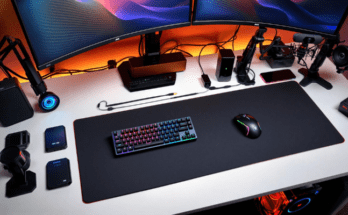Introduction
Today, computers are an object that has integrated into every human’s life. In our routine life starting form our official duties to recreation we all use computers for number of operations. However, whenever a computer has a problem the it is sometimes stressful and may take time to have it rectified. Fixing a computer issue is not easy but once you understand what you should do, fixing the computer is very simple.
In this article, we will highlight some of the best computer troubleshooting tips that will help maximize your computer use while minimizing fuss.
1. Recognize the Symptoms
As with any form of computer management, the initial stage which has to be taken into consideration is early identification of trouble signs. Some common signs of computer trouble include:
– Slow performance
– Freezing or crashing
– Error messages
– Overheating
– Odd noises
– Failure to start up or boot
If you can identify these symptoms, then you can better diagnose and fix the problem
2. Perform a Hardware Check
The next procedure in solving the problem with the computer is a hardware scan. It involves physically examining different body parts of the computer on the lookout for a problem. To perform a hardware check, follow these steps:
– Maybe you turn your computer on again and if by the computer hardware there are strange noises then you know there’s an issue with that particular part of the hardware in the computer.
– Turn on the computer and carefully look at the physical hardware of the components inside the computer case
– Use utilities to check the condition of a hard drive, memory or any other device you consider important
Check if all the connections are good, power supply, cables etc., of the computer
3. Update Your Software
One of the most admitted problems that can be faced when using computers is software troubles. Thus, it possible to lessen the problems associated with the failures in the software by updating your program continually. To update your software, follow these steps:
Sometimes New versions of your Operating System will be released, in such a case it is possible to update it.
– Ensure you are using the latest versions of your antivirus, and your firewall.
Please update the applications and drivers that are installed in your computer correctly.
But a firmware is a type of software that lives in your computer, and it needs updates as well
4. Run System Checks
Sometimes the running system checks can be used to fix many computer problems as well as make recommendations on how to avoid getting a virus. To perform a system check, follow these steps:
To do any diagnostics on the system, the built in Windows utility can be used to run a system scan.
To perform more tests, it is possible to suggest using third-party software for discovering more problems.
– Delete unnecessary files on the disk in order to increase the performance of your computer.
Defragment your hard drive; it increases the speed of the computer mostly the old model ones.
5. Back Up Your Data
Data backup is one of the core things that people need to do in their computers frequently as they face various issues. Regular data backup can ensure that in case your computer fails, or something else happens that has a hardware fault, that your data remains secure. To back up your data, follow these steps:
backup your important files somewhere that wont destroy it, an external hard drive or a cloud storage service.
Something to think about is that data collection has to be backed up every so often to make sure we have all data as current as possible.
Some may want to use backup software specifically for the purpose of backing up.
How to:
– Back up the contents of your computer on another disk or CD, and keep the backup disk in a different place.
6. Seek Professional Help
But if all the above steps have been done but the computer is still not working, it’s time to get help from a professional. You can also need a professional computer technician to solve issues that you never know and may not know how to solve them at all.
Conclusion
Orthodontic intervention is; therefore fixing an error on a computer can sometimes be a very daunting task but not impossible especially given the right procedures. If you feel a symptom, check the computer’s hardware, download the latest versions of software you need, check the operating system, copy your data, and consult a specialist if necessary, you will be able to fully enjoy using your computer. Which is why you can’t let computer trouble keep you down – just spend the time necessary to diagnose and take advantage of a smooth running computer.



